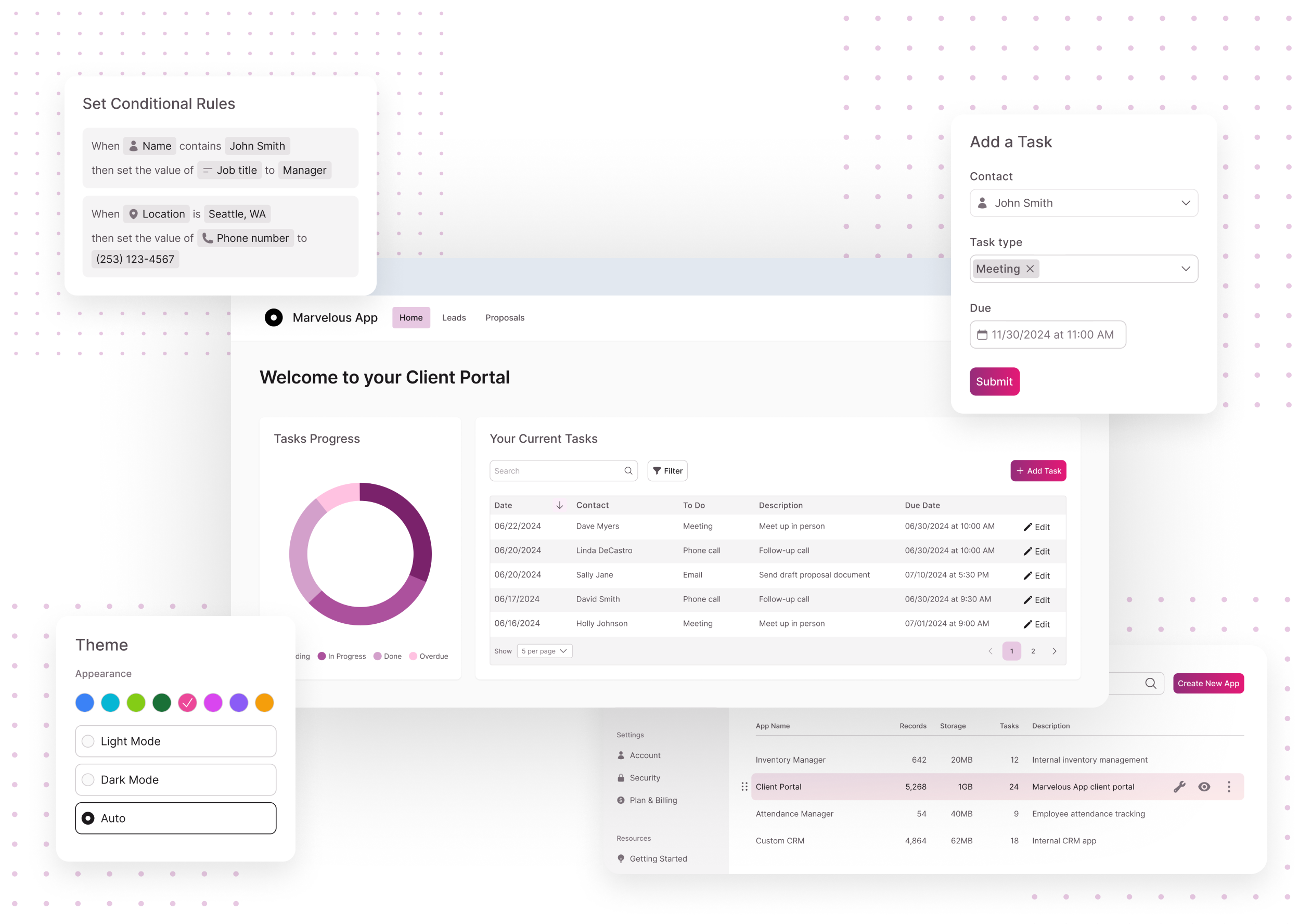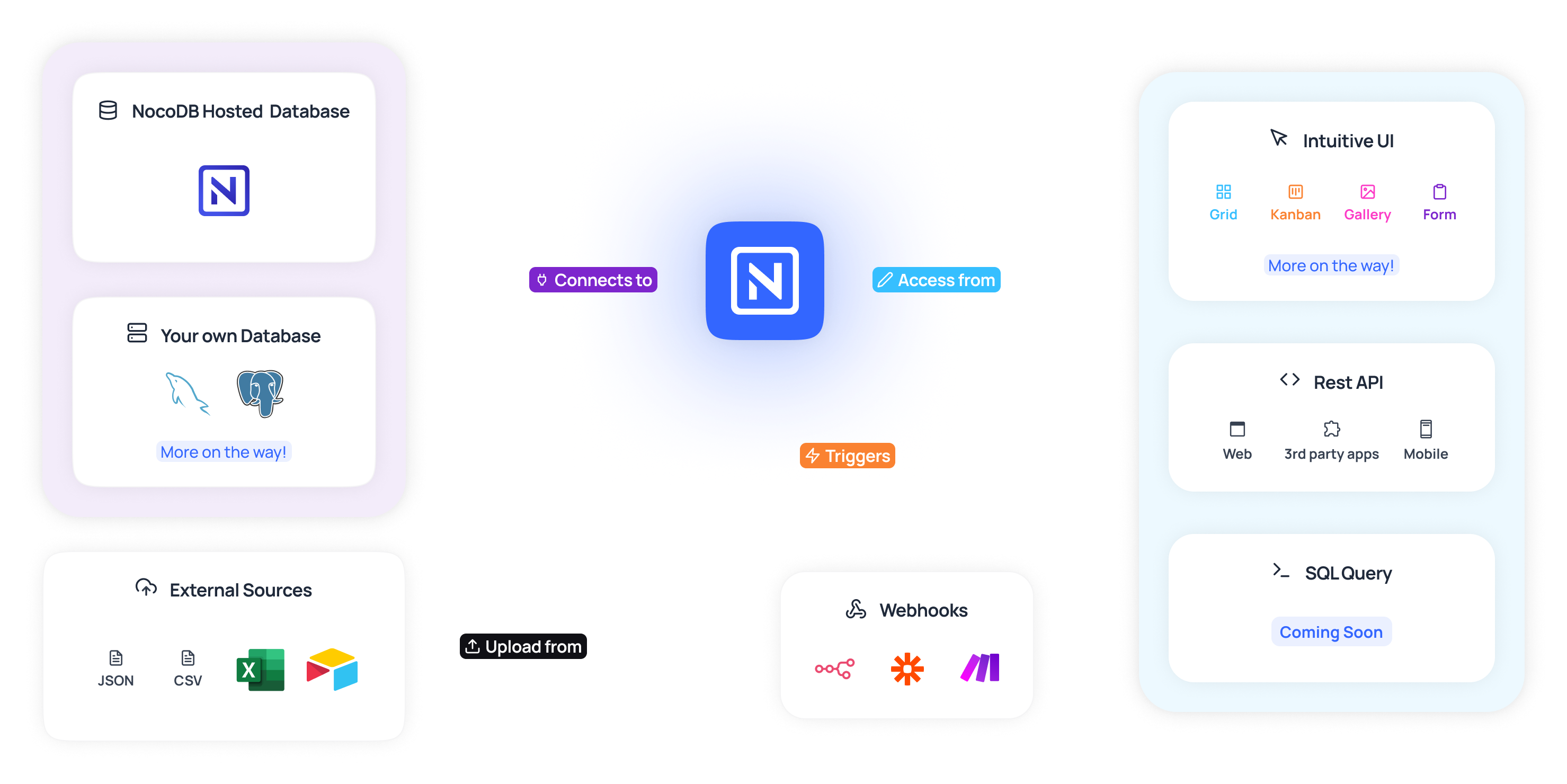No-Code Open Platform Data Source Creation: Streamline Complicated Development Jobs
No-Code Open Platform Data Source Creation: Streamline Complicated Development Jobs
Blog Article
Exploring the Benefits of Scalable Data Sources That Need No Coding Skills for Reliable Information Administration Solutions
The development of scalable data sources that get rid of the necessity for coding abilities provides a transformative opportunity for companies seeking reliable data monitoring options. By enabling non-technical customers to harness the power of data via instinctive interfaces, these systems boost access and foster partnership across varied groups. Their cost-effectiveness and adaptability to advancing company needs can dramatically simplify operational processes. As we think about the effects of such advancements, it ends up being crucial to check out exactly how they can reshape the landscape of data administration and drive lasting growth in an affordable setting.
Improved Accessibility for Users
Enhanced ease of access for individuals is a crucial element of scalable data sources, guaranteeing that information monitoring systems are user-friendly and straightforward. In an age where data-driven choices are extremely important, ease of access enables a larger series of customers, consisting of those without extensive technological knowledge, to engage with database systems efficiently. This democratization of data gain access to helps with boosted partnership throughout departments, empowering employees to make and remove understandings informed decisions.
Easy to use user interfaces, such as visual data and drag-and-drop attributes representation, simplify intricate information communications. These improvements reduce the learning contour connected with conventional database administration, allowing individuals to concentrate on leveraging information instead than facing technological complexities. Additionally, scalable data sources typically include adjustable dashboards and real-time analytics, providing individuals with prompt understandings customized to their specific requirements.

Cost-Effectiveness and Resource Cost Savings
Efficient data management not just depends upon availability however likewise on cost-effectiveness and resource savings. Scalable databases designed for customers with no coding skills substantially lower monetary burdens generally connected with traditional database monitoring systems. By getting rid of the demand for specialized programs knowledge, companies can allot their sources extra efficiently, concentrating funds on core organization tasks as opposed to extensive training or hiring skilled personnel.
In addition, these data sources commonly utilize cloud-based remedies, which additionally minimize costs associated with equipment and upkeep. Organizations can scale their database options according to their requirements, staying clear of the costs sustained from over-provisioning sources. This flexibility implies organizations can adjust to changing needs without sustaining unneeded expenses, causing considerable lasting savings.
In addition, straightforward user interfaces simplify data access and administration processes, lowering the time invested in administrative tasks. This efficiency equates into labor expense financial savings, permitting groups to concentrate on critical initiatives rather than routine maintenance. Generally, embracing scalable data sources that need no coding skills promotes a much more cost-efficient strategy to information monitoring, enabling organizations to maximize their sources while keeping high degrees of functional effectiveness.
Improved Partnership Across Teams

In addition, scalable data sources help with smooth communication amongst staff member. With user-friendly interfaces that need no coding abilities, staff members can easily produce, customize, and share records or control panels tailored to their specific requirements. This democratization of data encourages non-technical users to contribute insights, improving the joint environment.
Furthermore, these data sources support concurrent accessibility, permitting numerous users to work with the exact same dataset at the same time. This feature enhances productivity, as teams can participate in joint information evaluation without the risk of version control problems. The capability to leave notes or comments directly within the database further promotes discussion and clarifies information analyses.
Streamlined Information Monitoring Processes
In today's data-driven setting, companies acknowledge the requirement of streamlined data management processes to maximize performance and precision. By leveraging scalable data sources that need no coding skills, services can streamline their information handling and minimize the complexities normally connected with typical data source systems. This ease of access encourages non-technical customers to engage straight with information, helping with quicker decision-making and lowering dependence on specialized IT workers.
Structured data monitoring procedures enhance operations by automating regular jobs such as information entry, validation, and reporting. Automated information assimilation ensures that information from numerous resources is accumulated perfectly, eliminating silos and cultivating a merged view of vital company metrics (no-code). In addition, straightforward interfaces enable employees to manipulate data quickly, allowing them to create understandings that drive tactical efforts without the demand for considerable training.
This efficiency not only speeds up functional processes yet also lessens the possibility for human error, guaranteeing that data continues to be precise and dependable. Eventually, streamlined information management procedures through scalable data sources result in enhanced performance, allowing companies to concentrate on core activities while ensuring that their data administration practices are efficient and reliable.
Scalability for Growing Businesses

For expanding enterprises, the ability to scale up or down is important. A scalable database can take care of an increase of data created from brand-new customers, products, or services, ensuring that organization procedures continue to be nonstop. In addition, these databases supply the capacity to take care of peak loads effectively, which is essential throughout durations of rapid growth or seasonal spikes.
In addition, lots of scalable data source solutions are created with easy to use interfaces that need no coding abilities, encouraging non-technical team to handle information efficiently (no-code). This democratization of data management enables organizations to assign resources tactically and minimize dependency on specialized IT personnel
Ultimately, taking on a scalable data source not only enhances functional effectiveness yet also promotes an environment where businesses can introduce and evolve without the restraints of typical data source systems. This flexibility positions organizations for long-term success in today's competitive landscape.
Final Thought
In final thought, scalable data sources that require no coding skills offer significant advantages for efficient data monitoring. By enhancing data monitoring processes and supplying view it scalability for growing services, such solutions make it possible for organizations to adapt to transforming demands successfully.
Improved access for customers is a crucial aspect of scalable databases, making certain that information administration systems are straightforward and instinctive.Easy to use interfaces, such as visual information and drag-and-drop functions representation, streamline complicated data communications. On the whole, taking on scalable databases that require no coding abilities promotes a more cost-efficient technique to information management, making it possible for organizations to maximize their sources while maintaining high degrees of functional effectiveness.
By leveraging scalable data sources that need no coding skills, companies can streamline their data handling and reduce the intricacies commonly connected with traditional data source systems - no-code.Structured data monitoring procedures improve workflow by automating routine jobs such as data access, recognition, and coverage
Report this page